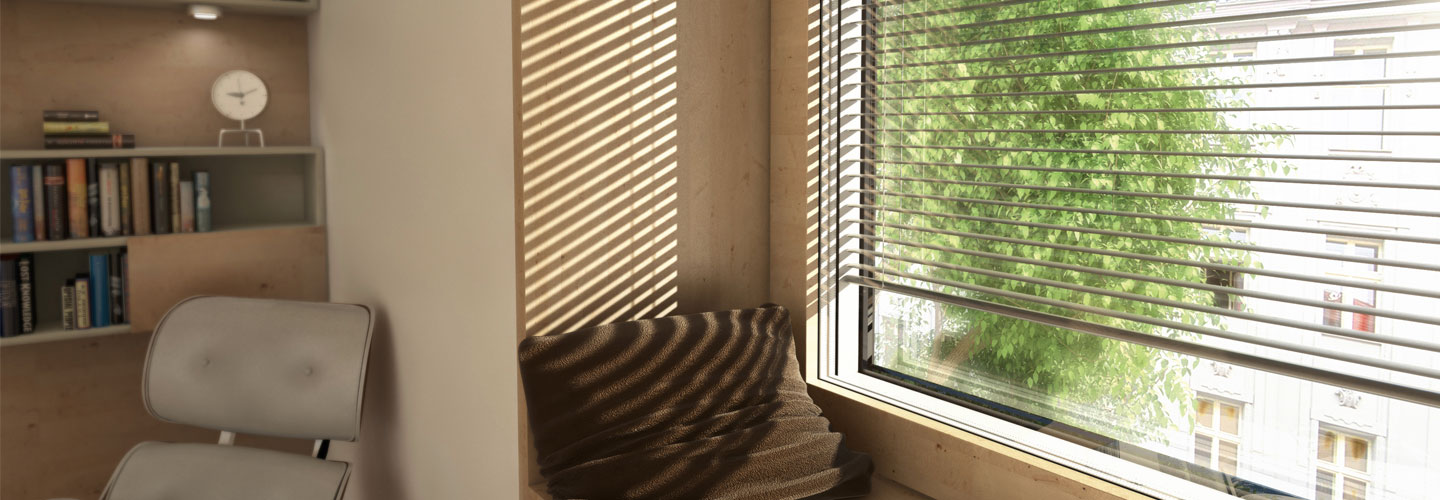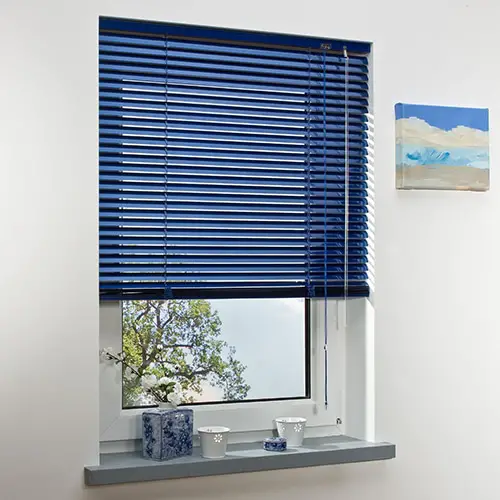Blinds inside windows, also known as integral blinds, are a type of shade installed between the two panes of glass that make up a double-glazed unit. They offer a sleek and modern look, as well as several benefits such as improved privacy, light control, energy efficiency and noise reduction. But how do blinds inside windows work? And what are the advantages and disadvantages of choosing them for your home? In this post, we’ll explain the mechanism and operation of blinds inside windows and help you decide if they are right for you.
Blinds inside windows work by using a magnetic or electronic system to control the movement of the blinds. The blinds can be tilted, raised or lowered by using a remote control, a wall switch or a magnetic slider. Blinds inside windows are sealed within the glass unit, which protects them from dust, dirt and damage.
How Blinds Inside Windows Work
There are different types of blinds inside windows, such as Venetian blinds, pleated blinds or cellular blinds. However, they all work in a similar way, using either a magnetic or an electronic system to operate the blinds.
- Magnetic system: This system uses magnets to transmit the movement from the external controller to the internal mechanism of the blinds. The controller can be a magnetic slider that runs along the side of the window frame or a knob that rotates on the glass. The magnets allow the user to tilt, raise or lower the blinds without compromising the seal of the glass unit.
- Electronic system: This system uses an electric motor to power the movement of the blinds. The motor is connected to a battery or a solar panel that is hidden within the window frame. The controller can be a remote control or a wall switch that communicates with the motor via radio frequency. The user can tilt, raise or lower the blinds with a simple touch of a button.

Advantages of Blinds Inside Windows
Blinds inside windows have several advantages over traditional blinds that are installed over the window frame. Some of these advantages are:
- Aesthetic appeal: Blinds inside windows have a sleek and modern appearance that can enhance any interior design. They also eliminate the need for cords, rods or valances that can clutter the window area.
- Privacy and light control: Blinds inside windows allow you to adjust the amount of light and privacy you want in your room. You can tilt the slats to let in some light while blocking the view from outside, or raise them completely to enjoy an unobstructed view.
- Energy efficiency: Blinds inside windows can help you save energy and money on your heating and cooling bills. By creating an air gap between the two panes of glass, they reduce heat loss in winter and heat gain in summer. They also reflect solar radiation and prevent glare, which can keep your room cooler and more comfortable.
- Noise reduction: Blinds inside windows can also help you reduce noise pollution from outside. By adding an extra layer of insulation between the glass panes, they can block some of the sound waves that enter your home. This can make your room quieter and more peaceful.
- Easy maintenance: Blinds inside windows are easy to maintain and clean. Because they are sealed within the glass unit, they are protected from dust, dirt, moisture and damage. They do not need to be dusted, washed or replaced as often as external blinds.

Disadvantages of Blinds Inside Windows
Blinds inside windows also have some disadvantages that you should consider before choosing them for your home. Some of these disadvantages are:
- Cost: Blinds inside windows are more expensive than traditional blinds. They require special installation and equipment that can increase the cost of your window replacement project. They may also be harder to find and order than standard blinds.
- Repair: Blinds inside windows are more difficult to repair than external blinds. If they malfunction or break down, you may need to replace the whole glass unit rather than just the blind component. This can be costly and inconvenient.
- Variety: Blinds inside windows have less variety than external blinds. They come in limited colors, styles and sizes that may not suit your personal preference or match your existing decor. They may also not be compatible with all types of windows or frames.

Final Thoughts
Blinds inside windows are a type of window treatment that features blinds installed between two panes of glass. They work by using a magnetic or an electronic system to control the movement of the blinds. They offer several benefits such as improved privacy, light control, energy efficiency and noise reduction. However, they also have some drawbacks such as higher cost, harder repair and less variety. If you are interested in blinds inside windows, you should weigh the pros and cons and consult a professional window installer for more information and advice.
Dale is the colorful mind behind HuetifulHomes.com, where he shows you how to create a home that is as fun and fabulous as you are. He has a passion for color and a knack for DIY, with years of interior design experience he shares his tips and tricks on how to create a home that reflects your personality and style. He believes that color is the key to happiness, and he wants to help you make your home more Huetiful.




